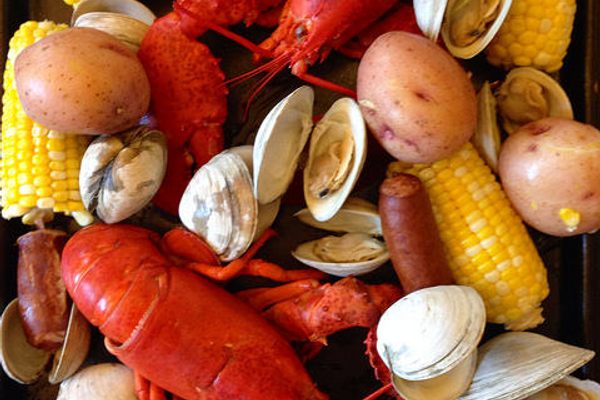Prepared Foods
The Fluffernutter
A completely delicious, nearly nutrient-free sandwich beloved by generations of New Englanders.
Think of quintessential New England cuisine, and it’s likely that clam chowder, lobster rolls, maple syrup, or Boston baked beans come to mind. You’d be forgiven if gooey, spreadable marshmallow did not make the list. The fluffernutter tends to fly under the radar when it comes to distinctly Yankee foods, yet it has been a childhood staple for generations of New Englanders in the United States.
As the name would suggest, the fluffernutter is a ridiculous food. It is also ridiculously delicious. The gooey concoction serves next to no nutritional value; it consists of just three ingredients: two slices of white bread (think Wonder Bread) and equal parts peanut butter and Marshmallow Fluff, a brand of marshmallow spread that hails from the Boston area.
The fluff recipe as we know it (which is basically just corn syrup, egg whites, sugar, and vanilla flavoring) was invented by Archibald Query in Somerville, on the outskirts of Boston, in 1917. Earlier versions of fluff existed, and in 1918, Emma Curtis of Massachusetts even published a recipe for a “Liberty Sandwich” featuring peanut butter and her own marshmallow crème. But it was Query’s version that became iconic. He whipped up the sweet stuff in his home kitchen and sold it door to door until, facing sugar shortages during World War I, he sold the recipe to a candy company, Durkee-Mower, based in Lynn, Massachusetts. The company rebranded the product as “Marshmallow Fluff,” and, in the genius marketing blitz that followed, made it a household name.
In the 1930s, Durkee-Mower advertised the product with a weekly radio show called the “Flufferettes” that aired right before Jack Benny, a famous entertainer. The final episode featured a recipe for the peanut butter and marshmallow sandwich that came to define the weird, sticky spread. The snack was dubbed the “fluffernutter” in the ’50s, and amid the midcentury luster for convenient foods with a long shelf life, it took off as a beloved kids’ lunch. It’s been a regional standby for decades, though the fervor for fluff never fully spread beyond New England, where Durkee-Mower is still cranking out jars of it.
For a sandwich to be an authentic fluffernutter, not just any marshmallow spread will do. It must be the iconic Fluff brand, sold in the recognizable glass jar (or oversized white tub) with the blue label and red lid. The patriotic undertones don’t stop with the red, white, and blue color scheme. The marshmallow snack is so all-American that it actually has ties (however loose) to the Revolutionary War: One of the earliest recipes of the candy spread was created by Emma Curtis, the great, great, great grandchild of Paul Revere, who famously warned Bostonians of the coming British.
Even today, fluff is a point of local pride in its birthplace of Somerville, where it’s celebrated with an annual “What the Fluff” festival, which largely consists of eating fluff in various forms. The food even enjoyed the spotlight in the Massachusetts legislature for a spell, after a state senator dared to suggest in 2006 that the decidedly unhealthy snack be restricted in schools. Other politicians fired back with a push to make the fluffernutter the official state sandwich. This particular honor was not to be, but the sandwich did achieve space-food status, when NASA astronauts Richard Michael Linnehan and later Sunita Williams enjoyed fluffernutters aboard the Space Station. Linnehan was born and raised in New England.
Written By
 Meg
Meg













